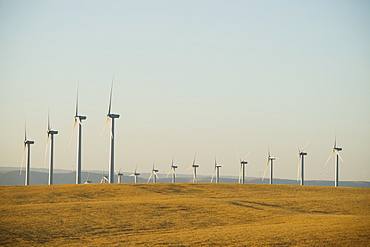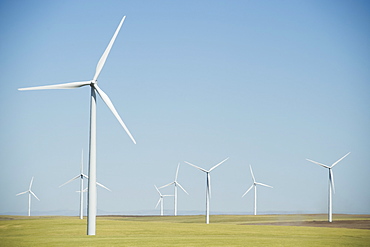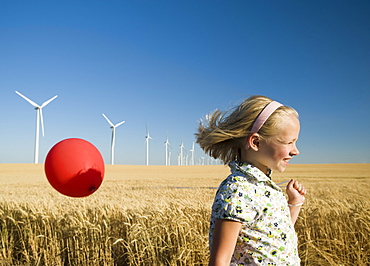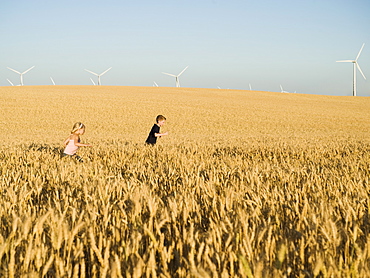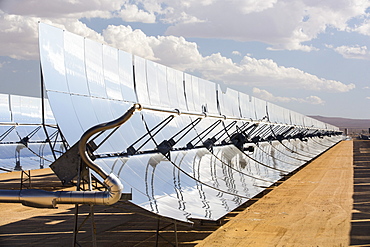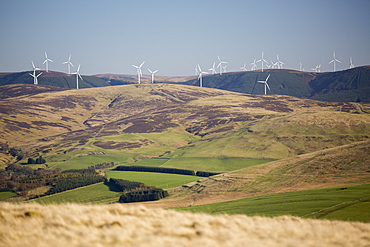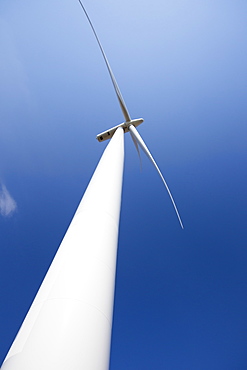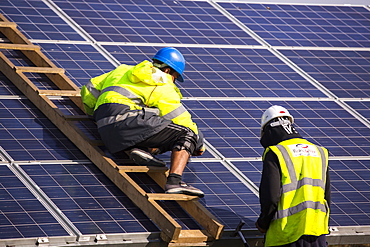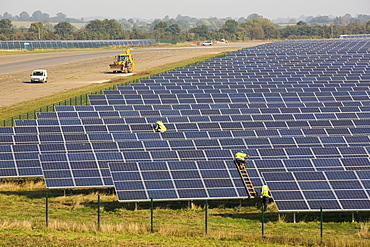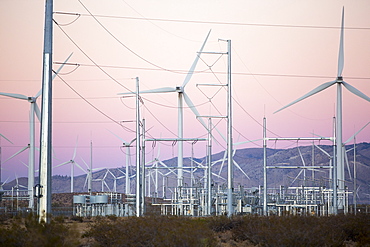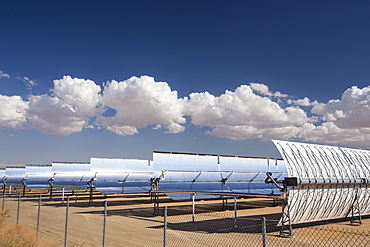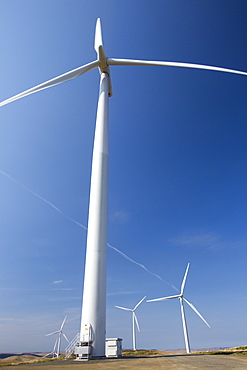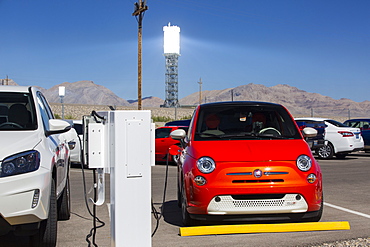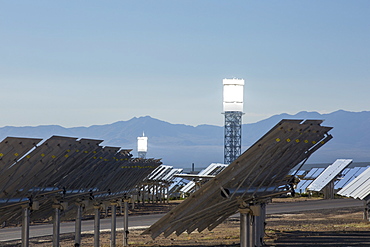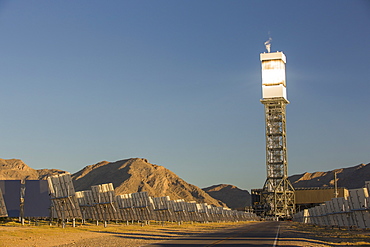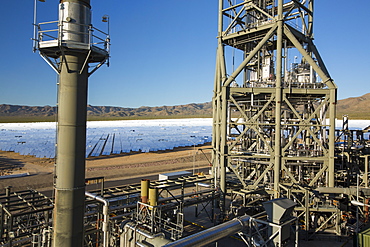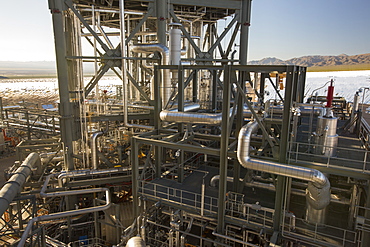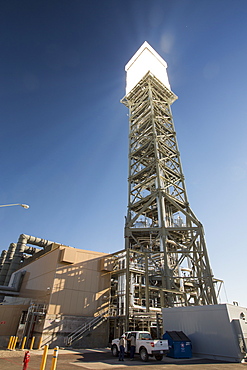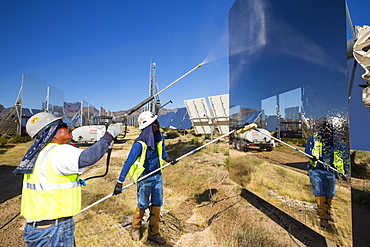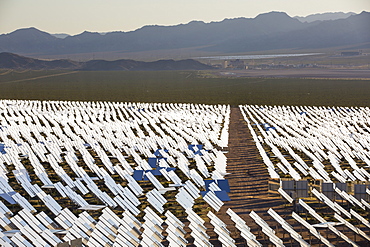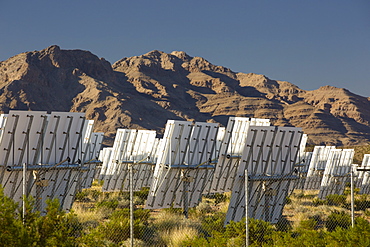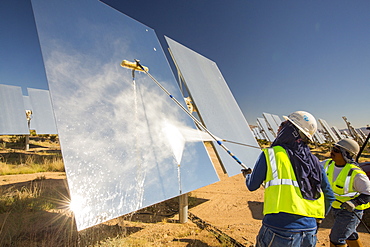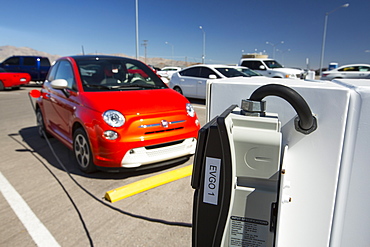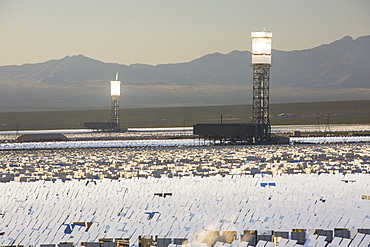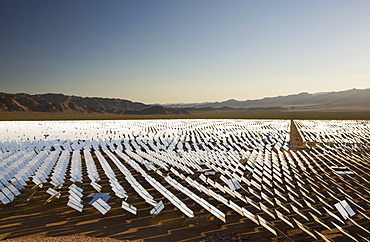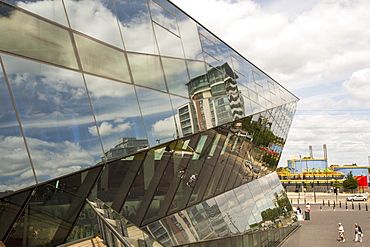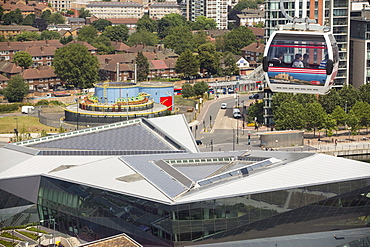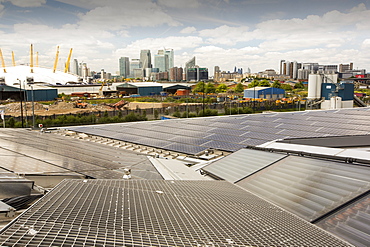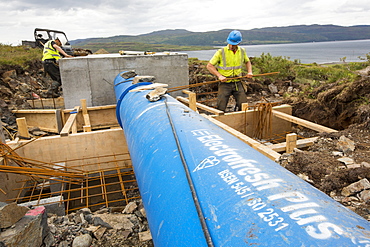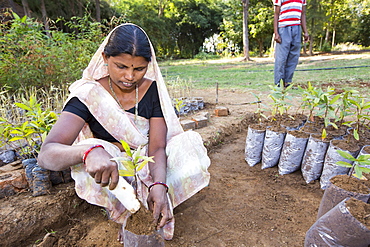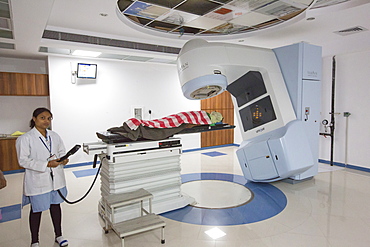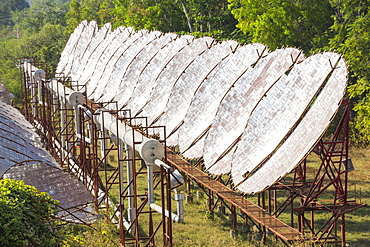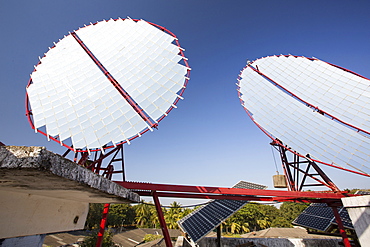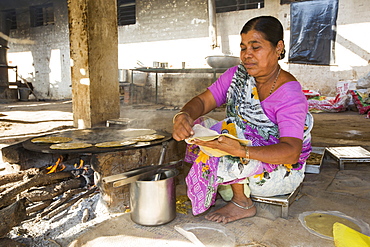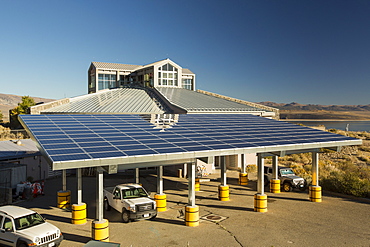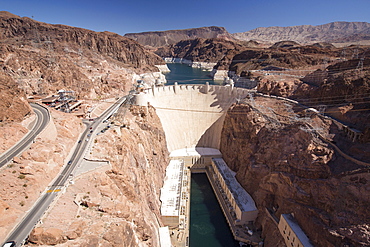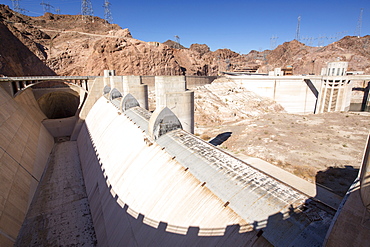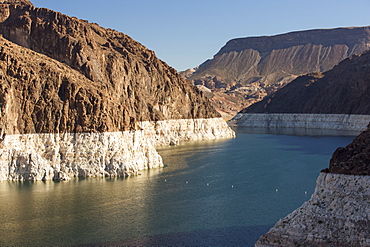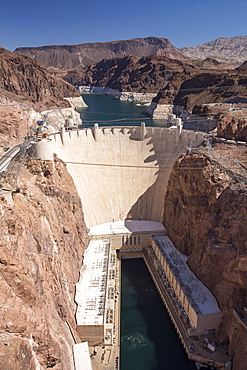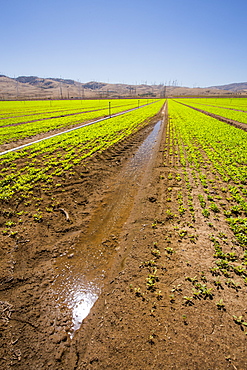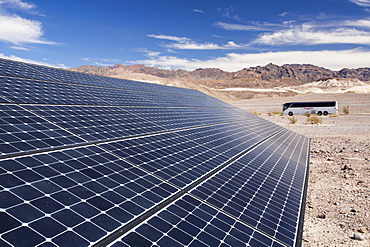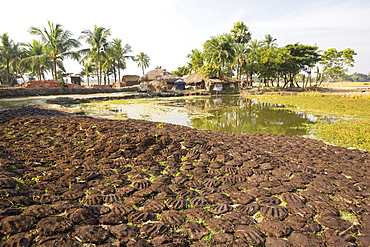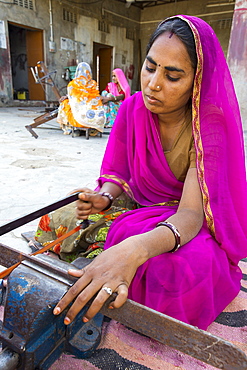Recent searches
Loading...
1178-22180 - Children running through tall wheat field on wind farm
1178-13374 - USA, California, Palm Springs, Wind farm, USA, California, Palm Springs
1178-13375 - USA, California, Palm Springs, Wind farm, USA, California, Palm Springs
911-10798 - The 354 megawatts SEGS plant at Kramer Junction is the second largest solar thermal power plant in the world, mojave Desert, California, USA.
911-10741 - A Wind farm in the Southern uplands of Scotland near Biggar, viewed from Tinto Hill.
911-10746 - The Clyde Wind Farm in the Southern Uplands of Scotland near Biggar. It is one of europes largest incorporating 152 wind turbines that produce 350 MW and covers 47 square kilomtres
911-10800 - Solar panels on a college car park in Bakersfield, California, USA. following the four year long drought, Bakersfield is now the driest city in the USA.
911-10774 - Technicians work on Wymeswold Solar Farm the largest solar farm in the UK at 34 MWp, based on an old disused second world war airfield, Leicestershire, UK. It contains 130,000 panels and covers 150 acres.
911-10728 - Part of the Tehachapi Pass wind farm, the first large scale wind farm area developed in the US, California, USA.
911-10797 - Pylons take renewable electricity from the Copper Mountain Solar power plant in Nevada, USA.
911-10729 - Part of the Tehachapi Pass wind farm, the first large scale wind farm area developed in the US, California, USA.
911-10731 - Crops being irrigated below the Tehachapi Pass wind farm, the first large scale wind farm area developed in the US, California, USA.
911-10796 - Pylons carrying solar electric from the Copper Mountain Solar 3 project, is a 250-megawatt solar power plant that produces enough energy to power 80, 000 homes, in Nevada, USA.
911-10773 - Wymeswold Solar Farm the largest solar farm in the UK at 34 MWp, based on an old disused second world war airfield, Leicestershire, UK. It contains 130,000 panels and covers 150 acres.
911-10727 - Part of the Tehachapi Pass wind farm, the first large scale wind farm area developed in the US, California, USA, at sunrise.
911-10747 - The Clyde Wind Farm in the Southern Uplands of Scotland near Biggar. It is one of europes largest incorporating 152 wind turbines that produce 350 MW and covers 47 square kilomtres
911-10733 - Part of the Tehachapi Pass wind farm, the first large scale wind farm area developed in the US, California, USA, at sunrise.
911-10732 - Part of the Tehachapi Pass wind farm, the first large scale wind farm area developed in the US, California, USA, at sunrise.
911-10744 - Culter Water valley below Coulter reservoir in the Southern Uplands of Scotland, UK.
911-10772 - Wymeswold Solar Farm the largest solar farm in the UK at 34 MWp, based on an old disused second world war airfield, Leicestershire, UK. It contains 130,000 panels and covers 150 acres.
911-10799 - The 354 megawatts SEGS plant at Kramer Junction is the second largest solar thermal power plant in the world, mojave Desert, California, USA.
911-10801 - Solar panels in Bakersfield, California, USA. following the four year long drought, Bakersfield is now the driest city in the USA.
911-10730 - Part of the Tehachapi Pass wind farm, the first large scale wind farm area developed in the US, California, USA.
911-10745 - The Clyde Wind Farm in the Southern Uplands of Scotland near Biggar. It is one of europes largest incorporating 152 wind turbines that produce 350 MW and covers 47 square kilomtres
911-10687 - Electric cars being recharged at the Ivanpah Solar Thermal Power Plant in California''s Mojave Desert is currently the largest solar thermal plant in the world. It generates 392 megawatts (MW) and deploys 173,500 heliostats that reflect the suns rays onto three solar towers. It covers 4,000 acres of desert.
911-10681 - The Ivanpah Solar Thermal Power Plant in California''s Mojave Desert is currently the largest solar thermal plant in the world. It generates 392 megawatts (MW) and deploys 173,500 heliostats that reflect the suns rays onto three solar towers. It covers 4,000 acres of desert.
911-10684 - The Ivanpah Solar Thermal Power Plant in California''s Mojave Desert is currently the largest solar thermal plant in the world. It generates 392 megawatts (MW) and deploys 173,500 heliostats that reflect the suns rays onto three solar towers. It covers 4,000 acres of desert.
911-10677 - The Ivanpah Solar Thermal Power Plant in California''s Mojave Desert is currently the largest solar thermal plant in the world. It generates 392 megawatts (MW) and deploys 173,500 heliostats that reflect the suns rays onto three solar towers. It covers 4,000 acres of desert.
911-10679 - The Ivanpah Solar Thermal Power Plant in California''s Mojave Desert is currently the largest solar thermal plant in the world. It generates 392 megawatts (MW) and deploys 173,500 heliostats that reflect the suns rays onto three solar towers. It covers 4,000 acres of desert.
911-10689 - The Ivanpah Solar Thermal Power Plant in California''s Mojave Desert is currently the largest solar thermal plant in the world. It generates 392 megawatts (MW) and deploys 173,500 heliostats that reflect the suns rays onto three solar towers. It covers 4,000 acres of desert.
911-10690 - The Ivanpah Solar Thermal Power Plant in California''s Mojave Desert is currently the largest solar thermal plant in the world. It generates 392 megawatts (MW) and deploys 173,500 heliostats that reflect the suns rays onto three solar towers. It covers 4,000 acres of desert.
911-10691 - The Ivanpah Solar Thermal Power Plant in California''s Mojave Desert is currently the largest solar thermal plant in the world. It generates 392 megawatts (MW) and deploys 173,500 heliostats that reflect the suns rays onto three solar towers. It covers 4,000 acres of desert.
911-10693 - Workers washing the heliostats to maximise reflective power at the Ivanpah Solar Thermal Power Plant in California''s Mojave Desert is currently the largest solar thermal plant in the world. It generates 392 megawatts (MW) and deploys 173,500 heliostats that reflect the suns rays onto three solar towers. It covers 4,000 acres of desert.
911-10683 - The Ivanpah Solar Thermal Power Plant in California''s Mojave Desert is currently the largest solar thermal plant in the world. It generates 392 megawatts (MW) and deploys 173,500 heliostats that reflect the suns rays onto three solar towers. It covers 4,000 acres of desert.
911-10682 - The Ivanpah Solar Thermal Power Plant in California''s Mojave Desert is currently the largest solar thermal plant in the world. It generates 392 megawatts (MW) and deploys 173,500 heliostats that reflect the suns rays onto three solar towers. It covers 4,000 acres of desert.
911-10678 - The Ivanpah Solar Thermal Power Plant in California''s Mojave Desert is currently the largest solar thermal plant in the world. It generates 392 megawatts (MW) and deploys 173,500 heliostats that reflect the suns rays onto three solar towers. It covers 4,000 acres of desert.
911-10692 - Workers washing the heliostats to maximise reflective power at the Ivanpah Solar Thermal Power Plant in California''s Mojave Desert is currently the largest solar thermal plant in the world. It generates 392 megawatts (MW) and deploys 173,500 heliostats that reflect the suns rays onto three solar towers. It covers 4,000 acres of desert.
911-10694 - Electric cars being recharged at the Ivanpah Solar Thermal Power Plant in California''s Mojave Desert is currently the largest solar thermal plant in the world. It generates 392 megawatts (MW) and deploys 173,500 heliostats that reflect the suns rays onto three solar towers. It covers 4,000 acres of desert.
911-10680 - The Ivanpah Solar Thermal Power Plant in California''s Mojave Desert is currently the largest solar thermal plant in the world. It generates 392 megawatts (MW) and deploys 173,500 heliostats that reflect the suns rays onto three solar towers. It covers 4,000 acres of desert.
911-10688 - The Ivanpah Solar Thermal Power Plant in California''s Mojave Desert is currently the largest solar thermal plant in the world. It generates 392 megawatts (MW) and deploys 173,500 heliostats that reflect the suns rays onto three solar towers. It covers 4,000 acres of desert.
911-10685 - Workers washing the heliostats to maximise reflective power at the Ivanpah Solar Thermal Power Plant in California''s Mojave Desert is currently the largest solar thermal plant in the world. It generates 392 megawatts (MW) and deploys 173,500 heliostats that reflect the suns rays onto three solar towers. It covers 4,000 acres of desert.
911-10686 - Electric cars being recharged at the Ivanpah Solar Thermal Power Plant in California''s Mojave Desert is currently the largest solar thermal plant in the world. It generates 392 megawatts (MW) and deploys 173,500 heliostats that reflect the suns rays onto three solar towers. It covers 4,000 acres of desert.
911-10672 - Solar thermal and solar PV panels on the roof of the Crystal building which is the first building in the world to be awarded an outstanding BREEAM (BRE Environmental Assessment Method) rating and a LEED (Leadership in Energy and Environmental Design) platinum rating. London, UK.
911-10674 - The Crystal building which is the first building in the world to be awarded an outstanding BREEAM (BRE Environmental Assessment Method) rating and a LEED (Leadership in Energy and Environmental Design) platinum rating. London, UK.
911-10675 - Solar thermal and solar PV panels on the roof of the Crystal building which is the first building in the world to be awarded an outstanding BREEAM (BRE Environmental Assessment Method) rating and a LEED (Leadership in Energy and Environmental Design) platinum rating. London, UK.
911-10673 - Solar thermal and solar PV panels on the roof of the Crystal building which is the first building in the world to be awarded an outstanding BREEAM (BRE Environmental Assessment Method) rating and a LEED (Leadership in Energy and Environmental Design) platinum rating. London, UK.
911-10642 - A solar park at Wheal Jane an old abandoned Cornish tin mine near Redruth, UK, that is rediscovering itself as a renewable energy hub, with the old mine buildings in the background.
911-10643 - A solar park at Wheal Jane an old abandoned Cornish tin mine near Redruth, UK, that is rediscovering itself as a renewable energy hub.
911-10638 - The Muni Seva Ashram in Goraj, near Vadodara, India, is a tranquil haven of humanitarian care. The Ashram is hugely sustainable, next year it will be completely carbon neutral. Its first solar panels were installed in 1984, long before climate change was on anyones agenda. Their energy is provided from solar panels, and wood grown on the estate. Waste food and animal manure is turned inot biogas to run the estates cars and also used for cooking. Solar cookers are also used, and the air conditioning for the hospital is solar run. 70 % of the food used is grown on the estate. They provide an orphanage, schools for all ages, vocational training, care for the elderly, a specialist cancer hospital withstate of the art machinary, and even have a solar crematorium. This shot shows the girls school.
911-10627 - A 700 Kw hydro power plant being constructed on the slopes of Ben more, Isle of Mull, Scotland, UK.
911-10637 - The Muni Seva Ashram in Goraj, near Vadodara, India, is a tranquil haven of humanitarian care. The Ashram is hugely sustainable, next year it will be completely carbon neutral. Its first solar panels were installed in 1984, long before climate change was on anyones agenda. Their energy is provided from solar panels, and wood grown on the estate. Waste food and animal manure is turned inot biogas to run the estates cars and also used for cooking. Solar cookers are also used, and the air conditioning for the hospital is solar run. 70 % of the food used is grown on the estate. They provide an orphanage, schools for all ages, vocational training, care for the elderly, a specialist cancer hospital withstate of the art machinary, and even have a solar crematorium. This shot shows a woman planting trees for onward growth in the Ashrams forests.
911-10626 - A 700 Kw hydro power plant being constructed on the slopes of Ben more, Isle of Mull, Scotland, UK.
911-10586 - Approaching Philadelphia, over the Benjamic Franklin Bridge on the Delaware River, with harbour front warehouses covered in solar panels. USA.
911-10636 - The Muni Seva Ashram in Goraj, near Vadodara, India, is a tranquil haven of humanitarian care. The Ashram is hugely sustainable, next year it will be completely carbon neutral. Its first solar panels were installed in 1984, long before climate change was on anyones agenda. Their energy is provided from solar panels, and wood grown on the estate. Waste food and animal manure is turned inot biogas to run the estates cars and also used for cooking. Solar cookers are also used, and the air conditioning for the hospital is solar run. 70 % of the food used is grown on the estate. They provide an orphanage, schools for all ages, vocational training, care for the elderly, a specialist cancer hospital withstate of the art machinary, and even have a solar crematorium. This shot shows a Varian nuclear proton therapy machine in the specialist cancer hospital.
911-10641 - The Muni Seva Ashram in Goraj, near Vadodara, India, is a tranquil haven of humanitarian care. The Ashram is hugely sustainable, next year it will be completely carbon neutral. Its first solar panels were installed in 1984, long before climate change was on anyones agenda. Their energy is provided from solar panels, and wood grown on the estate. Waste food and animal manure is turned inot biogas to run the estates cars and also used for cooking. Solar cookers are also used, and the air conditioning for the hospital is solar run. 70 % of the food used is grown on the estate. They provide an orphanage, schools for all ages, vocational training, care for the elderly, a specialist cancer hospital withstate of the art machinary, and even have a solar crematorium. This shot shows the solar air conditioning for the Ashram's hospital.
911-10639 - The Muni Seva Ashram in Goraj, near Vadodara, India, is a tranquil haven of humanitarian care. The Ashram is hugely sustainable, next year it will be completely carbon neutral. Its first solar panels were installed in 1984, long before climate change was on anyones agenda. Their energy is provided from solar panels, and wood grown on the estate. Waste food and animal manure is turned inot biogas to run the estates cars and also used for cooking. Solar cookers are also used, and the air conditioning for the hospital is solar run. 70 % of the food used is grown on the estate. They provide an orphanage, schools for all ages, vocational training, care for the elderly, a specialist cancer hospital withstate of the art machinary, and even have a solar crematorium. This shot shows solar panels that focus the suns rays on heat exchangers to boil oil, which is then sent down to the kitchens below to heat the cookers.
911-10628 - A 700 Kw hydro pwer scheme being constructed on the slopes of Ben More on Mull, Scotland, UK.
911-10629 - A 700 Kw hydro pwer scheme being constructed on the slopes of Ben More on Mull, Scotland, UK.
911-10635 - The Muni Seva Ashram in Goraj, near Vadodara, India, is a tranquil haven of humanitarian care. The Ashram is hugely sustainable, next year it will be completely carbon neutral. Its first solar panels were installed in 1984, long before climate change was on anyones agenda. Their energy is provided from solar panels, and wood grown on the estate. Waste food and animal manure is turned inot biogas to run the estates cars and also used for cooking. Solar cookers are also used, and the air conditioning for the hospital is solar run. 70 % of the food used is grown on the estate. They provide an orphanage, schools for all ages, vocational training, care for the elderly, a specialist cancer hospital withstate of the art machinary, and even have a solar crematorium. This shot shows a Hematology Analyzer for analyzing blood in one of the labs in the specialist cancer hospital.
911-10640 - The Muni Seva Ashram in Goraj, near Vadodara, India, is a tranquil haven of humanitarian care. The Ashram is hugely sustainable, next year it will be completely carbon neutral. Its first solar panels were installed in 1984, long before climate change was on anyones agenda. Their energy is provided from solar panels, and wood grown on the estate. Waste food and animal manure is turned inot biogas to run the estates cars and also used for cooking. Solar cookers are also used, and the air conditioning for the hospital is solar run. 70 % of the food used is grown on the estate. They provide an orphanage, schools for all ages, vocational training, care for the elderly, a specialist cancer hospital withstate of the art machinary, and even have a solar crematorium. This shot shows a cook preparing chapatis on a biofuel stove.
911-10646 - An offshore wind farm and gas platfroms in morecame bay from the summit of Black Combe, Cumbria, UK.
1178-4488 - USA, North Carolina, Outer Banks, Kill Devil Hills, pier with wind turbines at sunset
911-10559 - At 152 Mw the sloy Hydrop power station is the largest hydro power station in the UK, Loch Lomond, Scotland, UK.
911-10558 - At 152 Mw the sloy Hydrop power station is the largest hydro power station in the UK, Loch Lomond, Scotland, UK.
911-10479 - Solar panels on the Mono Lake visitor centre in Lee Vining, California, USA.
911-10463 - The Hoover Dam and Lake Mead hydro electric plant, which is at very low levels following a four year drought
911-10461 - The overspill, standing high and dry at the Hoover Dam on Lake Mead, Nevada, USA, following a four year long drought.
911-10464 - Lake Mead, Nevada, USA. The lake is at a very low level due to the four year long drought, with the boundary of where the water used to reach, clearly visible.
911-10462 - The Hoover Dam and Lake Mead hydro electric plant, which is at very low levels following a four year drought
911-10320 - Crops being irrigated below the Tehachapi Pass wind farm, the first large scale wind farm area developed in the US, California, USA.
911-10302 - Solar panels at the Furnace Creek Visitor Centre in Death Valley. Death Valley is the lowest, hottest, driest place in the USA, with an average annual rainfall of around 2 inches, some years it does not receive any rain at all.
911-10197 - Solar panels on a visitor centre in the Vallon de la Lex Blanche below Mont Blanc, Italy, on the Tour de Mont Blanc long distance footpath.
911-10182 - Cow dung belonging to subsistence farmers in the Sunderbans, a low lying area of the Ganges Delta in Eastern India, that is very vulnerable to sea level rise. The cow dung is used as biofuel in traditional clay ovens.
911-10289 - Solar panels amongst Badland scenery in Death Valley which is the lowest, hottest, driest place in the USA, with an average annual rainfall of around 2 inches, some years it does not receive any rain at all.
911-10303 - Solar panels at the Furnace Creek Visitor Centre in Death Valley. Death Valley is the lowest, hottest, driest place in the USA, with an average annual rainfall of around 2 inches, some years it does not receive any rain at all.
911-10290 - Solar panels amongst Badland scenery in Death Valley which is the lowest, hottest, driest place in the USA, with an average annual rainfall of around 2 inches, some years it does not receive any rain at all.
911-10183 - Cow dung belonging to subsistence farmers in the Sunderbans, a low lying area of the Ganges Delta in Eastern India, that is very vulnerable to sea level rise. The cow dung is used as biofuel in traditional clay ovens.
911-10139 - Solar panels on the Cabanne D' Orny in the Swiss Alps, providing electricty for this off grid mountain hut at over 10,000 feet.
911-10132 - Solar panels attached to a cliff above the Refuge Bertone, which provied electricity to this off grid mountain hut.
911-10131 - Solar panels attached to a cliff above the Refuge Bertone, which provied electricity to this off grid mountain hut.
911-10048 - Women constructing solar cookers at the Barefoot College in Tilonia, Rajasthan, India. The Barefoot College is a worldwide charity, founded by Bunker Roy, its aims are, education, drinking water, electrification through solar power, skill development, health, women empowerment and the upliftment of rural people. The use of the cookers, vastly reduces the amount of fire wood women have to go out and collect from the forest.
911-10059 - Women on a solar workshop, learning how to make solar lanters at the Barefoot College in Tilonia, Rajasthan, India. The Barefoot College is a worldwide charity, founded by Bunker Roy, its aims are, education, drinking water, electrification through solar power, skill development, health, women empowerment and the upliftment of rural people. Many of the women are iliterate or semi literate. They are trained from countries all over the world, so that they can take their skills back and cascade the learning.
911-10051 - Women on a solar workshop, learning how to make solar lanters at the Barefoot College in Tilonia, Rajasthan, India. The Barefoot College is a worldwide charity, founded by Bunker Roy, its aims are, education, drinking water, electrification through solar power, skill development, health, women empowerment and the upliftment of rural people. Many of the women are iliterate or semi literate. They are trained from countries all over the world, so that they can take their skills back and cascade the learning.
911-10043 - Women constructing solar cookers at the Barefoot College in Tilonia, Rajasthan, India. The Barefoot College is a worldwide charity, founded by Bunker Roy, its aims are, education, drinking water, electrification through solar power, skill development, health, women empowerment and the upliftment of rural people.
911-10044 - Women constructing solar cookers at the Barefoot College in Tilonia, Rajasthan, India, demonstrate how hot the device is, by holding a sheet of newspaper which instantly sets on fire in the 300 degree Celcius heat. The Barefoot College is a worldwide charity, founded by Bunker Roy, its aims are, education, drinking water, electrification through solar power, skill development, health, women empowerment and the upliftment of rural people. The use of the cookers, vastly reduces the amount of fire wood women have to go out and collect from the forest.
911-10046 - Women constructing solar cookers at the Barefoot College in Tilonia, Rajasthan, India. The Barefoot College is a worldwide charity, founded by Bunker Roy, its aims are, education, drinking water, electrification through solar power, skill development, health, women empowerment and the upliftment of rural people.
911-10062 - Women welding joints during the construction of solar cookers at the Barefoot College in Tilonia, Rajasthan, India. The Barefoot College is a worldwide charity, founded by Bunker Roy, its aims are, education, drinking water, electrification through solar power, skill development, health, women empowerment and the upliftment of rural people. Solar cookers save women having to walk to the froest to cut down wood for cooking, thus saving the forests, and a daily chore for woman.
911-10045 - Women constructing solar cookers at the Barefoot College in Tilonia, Rajasthan, India. The Barefoot College is a worldwide charity, founded by Bunker Roy, its aims are, education, drinking water, electrification through solar power, skill development, health, women empowerment and the upliftment of rural people. The use of the cookers, vastly reduces the amount of fire wood women have to go out and collect from the forest.

